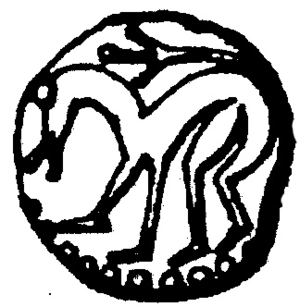704
Year 704 (DCCIV) was a leap year starting on Tuesday (link will display the full calendar) of the Julian calendar. The denomination 704 for this year has been used since the early medieval period, when the Anno Domini calendar era became the prevalent method in Europe for naming years.
| Millennium: | 1st millennium |
|---|---|
| Centuries: | |
| Decades: | |
| Years: |
|
| 704 by topic |
|---|
| Leaders |
| Categories |
|
| Gregorian calendar | 704 DCCIV |
| Ab urbe condita | 1457 |
| Armenian calendar | 153 ԹՎ ՃԾԳ |
| Assyrian calendar | 5454 |
| Balinese saka calendar | 625–626 |
| Bengali calendar | 111 |
| Berber calendar | 1654 |
| Buddhist calendar | 1248 |
| Burmese calendar | 66 |
| Byzantine calendar | 6212–6213 |
| Chinese calendar | 癸卯年 (Water Rabbit) 3400 or 3340 — to — 甲辰年 (Wood Dragon) 3401 or 3341 |
| Coptic calendar | 420–421 |
| Discordian calendar | 1870 |
| Ethiopian calendar | 696–697 |
| Hebrew calendar | 4464–4465 |
| Hindu calendars | |
| - Vikram Samvat | 760–761 |
| - Shaka Samvat | 625–626 |
| - Kali Yuga | 3804–3805 |
| Holocene calendar | 10704 |
| Iranian calendar | 82–83 |
| Islamic calendar | 84–85 |
| Japanese calendar | Taihō 4 / Keiun 1 (慶雲元年) |
| Javanese calendar | 596–597 |
| Julian calendar | 704 DCCIV |
| Korean calendar | 3037 |
| Minguo calendar | 1208 before ROC 民前1208年 |
| Nanakshahi calendar | −764 |
| Seleucid era | 1015/1016 AG |
| Thai solar calendar | 1246–1247 |
| Tibetan calendar | 阴水兔年 (female Water-Rabbit) 830 or 449 or −323 — to — 阳木龙年 (male Wood-Dragon) 831 or 450 or −322 |

Lion symbol used on king Aldfrith's coinage[1]
Events
By place
Byzantine Empire
- After spending nearly a decade with the Khazars (a Turkic tribe which controls a Steppe empire), the deposed emperor Justinian II flees from his exile at Cherson (Crimea). He escapes with help from Busir, ruler (khagan) of the Khazars, who marries him to his sister Theodora.[2]
- Autumn – Emperor Tiberios III tries to bribe Busir and dispatches two Khazar officials, Papatzys and Balgitzin, to kill Justinian. Warned by his wife, he flees to the Bulgar Khanate, securing the assistance of the Bulgarian ruler Tervel, in exchange for financial considerations.[3][4]
- Arab–Byzantine War: A Byzantine expeditionary force under Heraclius (brother of Tiberios III) is defeated and destroyed by an Umayyad army (10,000 men) at Sisium (modern Turkey), killing most and leading the rest off in chains to Damascus.[3][5]
Britain
- King Æthelred I abdicates the throne after a 30-year reign and becomes an abbot at Bardney (Lincolnshire). He is succeeded by his nephew Cenred (Coenred), a son of the late king Wulfhere, who becomes ruler of Mercia.
- December 14 – King Aldfrith of Northumbria dies after a 20-year reign. His throne is seized by Eadwulf I, of unknown descent. Wilfrid travels to Driffield to support Eadwulf, but his advances are rejected (approximate date).
Arabian Empire
- Arab conquest of Armenia: The Muslim Arabs under Abdallah ibn Abd al-Malik (a son of caliph Abd al-Malik ibn Marwan) invade Armenia and subdue the anti-Arab revolt along with his uncle Muhammad ibn Marwan.[3][5]
- Winter – Abdallah ibn Abd al-Malik is recalled from Armenia to serve as governor of Egypt. He requires that government business be done in Arabic instead of Coptic. His tenure is marred by famine and corruption.
Asia
- Emperor Tridu Songtsen dies in battle and is succeeded by his mother Khri ma lod who becomes de facto ruler of the Tibetan Empire. She begins a massive expansion into the Tarim Basin and Northern China.
Births
Deaths
- December 14 or 705 – Aldfrith, king of Northumbria (or 705)
- Abd al-Rahman ibn Muhammad ibn al-Ash'ath, Arab rebel leader
- Adomnán, Irish abbot and hagiographer (b. c.624)
- Tridu Songtsen, emperor of Tibet (b. 670)
gollark: I made a JS port of my Rust port of the FractalArt thing: https://osmarks.net/fractalart.html
gollark: It MIGHT be undefined behaviour. I don't actually know what the C++ spec says.
gollark: Yeeees.
gollark: * numerical values
gollark: Before 5.3, all Lua values are in fact floats.
References
- For the identification as a lion, see Gannon, pp. 125–127
- Fine, John V. A., Jr. (1991) [1983]. The Early Medieval Balkans: A Critical Survey from the Sixth to the Late Twelfth Century. Ann Arbor, Michigan: University of Michigan Press. p. 74. ISBN 0-472-08149-7.
- Venning, Timothy, ed. (2006). A Chronology of the Byzantine Empire. Palgrave Macmillan. p. 189. ISBN 1-4039-1774-4.
- Treadgold, Warren (1997). A History of the Byzantine State and Society. Stanford, California: Stanford University Press. pp. 339–340. ISBN 0-8047-2630-2.
- Treadgold, Warren (1997). A History of the Byzantine State and Society. Stanford, California: Stanford University Press. p. 339. ISBN 0-8047-2630-2.
This article is issued from Wikipedia. The text is licensed under Creative Commons - Attribution - Sharealike. Additional terms may apply for the media files.